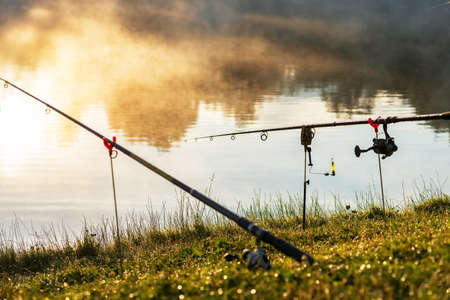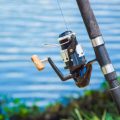1. Understanding the Basics: Weather, Moon Phases, and Summer Patterns
If you want to dial in your summer fishing game across the U.S., you need to understand how weather and moon phases play off each other. These two factors are key drivers in shaping fish behavior, and knowing how they interact gives you a real edge on the water. Let’s break down what’s really happening.
The American Summer: Not Just Hotter, But Different
Across the States, summer brings longer daylight hours, higher water temps, and often unpredictable storms. Fish respond by adjusting their feeding times, locations, and activity levels. You’ll see bass sliding deeper midday or stripers hunting aggressively at dawn and dusk—classic moves tied to changing conditions.
Lunar Influence: More Than Just Tides
The moon doesn’t just mess with saltwater tides—it also impacts freshwater species. Lunar phases affect fish feeding windows, spawning cycles, and even migration routes. Savvy anglers watch for full and new moons since these periods generally boost fish activity, especially when paired with stable summer weather.
Why It Matters for American Anglers
Whether you’re chasing largemouth in Texas or reds along the Gulf, understanding this core relationship between weather, lunar phases, and local patterns gives you tactical intel. Recognize these triggers and you’ll find yourself matching your strategies to the true rhythms of American summer fishing environments.
2. How Temperature Swings Affect Fish Behavior
When it comes to summer fishing across the United States, understanding temperature swings is a game changer. Rising temps, heat waves, and sudden cold fronts all play major roles in determining where fish hold up and when they’re most likely to bite. Let’s break down how these weather shifts impact your fishing success.
Rising Temps & Heat Waves: The Dog Days Dilemma
During prolonged hot spells, water temperatures soar, especially in shallow lakes, ponds, or tidal flats. Most game fish—bass, walleye, trout—respond by seeking deeper, cooler water or shaded cover. Oxygen levels drop in overheated shallows, pushing predator fish to either dawn/dusk feeding windows or nighttime activity. Anglers who adjust by fishing deeper structure or nighttime hours will see more action when the sun blazes.
Sudden Cold Fronts: Bite Killer or Opportunity?
From the Great Lakes to Florida’s mangroves, a fast-moving cold front can shut down the bite. Fish become sluggish as barometric pressure rises and water temps dip quickly. However, pre-front conditions often spark a brief feeding frenzy as fish anticipate the change. After the front passes, downsizing baits and slowing presentations can still tempt lethargic fish into striking.
Temperature Swings and Fish Behavior Table
| Condition | Fish Behavior | Best Tactics |
|---|---|---|
| Heat Wave (High Temps) | Move deep or under cover; feed at dawn/dusk/night | Target deep structure, use slow retrieves, fish at low light |
| Sudden Cold Front | Bite slows; fish become less active | Downsize lures, slow down presentation, focus on sheltered spots |
| Stable Warm Weather | Predictable patterns; regular feeding times | Match hatch, fish structure and edges during peak times |
The bottom line: Whether you’re chasing largemouth in Texas reservoirs or stripers off the Jersey shore, reading the temperature swings and adjusting your tactics is crucial for consistent summer hookups.
![]()
3. Why the Moon Matters: Phases, Tides, and Bite Windows
If you’re serious about hooking up this summer, you can’t ignore what’s happening overhead. The moon isn’t just a pretty nightlight—it’s a tactical game-changer for anglers across the U.S. Whether you’re casting for largemouth bass in Midwest lakes, chasing stripers on coastal flats, or drifting baits down Southern rivers, understanding lunar phases and solunar tables gives you the edge when the bite slows down.
Moon Phases and Fish Behavior
The cycle from new moon to full moon affects fish activity more than most weekend warriors realize. During a full or new moon, increased light and gravitational pull supercharge underwater movement. Fish tend to feed more aggressively during these periods—especially around dawn and dusk. On clear summer nights, full moons can even push species like catfish or tarpon into shallow waters to hunt, making late-night and pre-dawn sessions prime time.
Tides: Timing Your Casts on Coastal Waters
If you’re fishing saltwater hotspots from the Jersey Shore to Gulf Coast marshes, tide swings are everything. The moon’s gravitational pull drives tidal flows, which in turn trigger feeding frenzies as baitfish get swept along rip lines and structure. Savvy American anglers plan their trips around incoming or outgoing tides during strong moon phases—when predator fish are hunting hardest in moving water.
Solunar Tables: Predicting Peak Activity Windows
Solunar theory takes things next-level by pinpointing daily “major” and “minor” feeding periods based on the moon’s position relative to Earth. Plenty of hardcore U.S. anglers swear by solunar charts—timing their casts for those magic windows when everything lines up. While weather still plays a role, combining solunar data with local conditions puts you right in the strike zone when big bass, reds, or trout are most likely to hit.
Bottom line: Ignoring the moon means missing out on some of summer’s hottest bite windows. Whether you’re bank fishing a reservoir or poling skinny water for tailing reds, let lunar cycles guide your strategy—and watch your catch rates spike when everyone else is blaming slow days on “bad luck.”
4. Combining Weather Forecasts and Lunar Calendars: Spot-On Summer Strategy
If you want to stack the deck in your favor this summer, it’s time to go tactical with tech. By merging weather apps with lunar calendars, American anglers can nail down those golden windows when fish are most fired up. Let’s break down how to blend these two power tools for a next-level game plan that’ll make your buddies jealous.
Locking in the Best Days with Data
First off, grab a reliable weather app—think NOAA Weather Radar Live or MyRadar—and sync it up with a fishing-specific lunar calendar like Solunar Tables or Fishbrain. Here’s what you’re looking for:
- Weather App Intel: Track cold fronts, barometric pressure drops, wind speed/direction, and cloud cover.
- Lunar Calendar Cues: Zero in on new moon/full moon periods, plus major and minor feeding times.
How to Sync It All Up
The magic happens when you match ideal weather with peak lunar activity. For example, if your favorite bass lake is forecasted for overcast skies (killer for topwater action) during a full moons major feeding window—get out there. Here’s a quick-hit reference for combining both systems:
| Weather Condition | Lunar Phase | Target Species | Peak Bite Window |
|---|---|---|---|
| Overcast & Stable Pressure | Full Moon – Major Period | Bass, Catfish | Dawn & Dusk |
| Falling Barometer | New Moon – Minor Period | Walleye, Trout | Sundown & Night |
| Pre-Front Warmth | First Quarter – Major Period | Stripers, Redfish | Lunchtime & Early PM |
| Light Breeze & High Clouds | Last Quarter – Minor Period | Panfish, Perch | Mid-Morning |
Quick Pro Tip:
If the forecast calls for bluebird skies after a front, but the lunar tables show a major period overlapping late afternoon—don’t bail just yet. Sometimes those “off” days turn into jackpots if you hit the right moon phase.
The Real-World Edge
This combo of meteorology and moon science isn’t just theory—it’s hard-nosed fishing strategy straight from tournament playbooks and dock talk across the U.S. So next time you load the truck, check both your weather and lunar apps before hitting the water. You’ll fish smarter, waste less time, and land more of what you’re after.
5. Hardcore Tips: Adjusting Tactics for Tricky Summer Conditions
When summer fishing gets tough—thanks to a sudden cold front, sweltering heatwave, or a surprise full moon—real anglers don’t pack it in. They adapt. Here’s how hardcore American fishers tweak their approach on the fly to keep rods bent and coolers full.
Gear Tweaks That Make a Difference
First up, think lighter lines and finesse gear when the bite gets finicky during high-pressure systems or post-storm bluebird skies. Switch to fluorocarbon leaders for stealth, downsize your hooks, and go with smaller, more natural baits if bass or walleye are acting lock-jawed. On the flip side, if an incoming storm drops barometric pressure, break out bigger crankbaits or topwater lures—predators often get aggressive before weather shifts.
Time-of-Day Pivots
Summer sun can make midday fishing brutal and unproductive. Instead, set your alarm early or stay out late. Early morning and dusk sessions are prime time when both water temps and boat traffic are lower. If the moon phase is peaking—especially around a full or new moon—consider fishing at night for catfish, stripers, or even largemouths that hunt under the cover of darkness.
Location Changes When Nature Throws Heat
If your favorite shallow flat is empty after a week of ninety-degree days, it’s time to move. Hunt for deeper holes, shaded banks, or current breaks where cooler water collects oxygen and baitfish school up. Rivers? Fish near inflows after a rainstorm; lakes? Target drop-offs and ledges where big fish lurk just beyond reach of the blazing sun. Don’t be afraid to try urban spots like bridge pilings or marina docks—they can hold surprising action in hot weather.
Pro Tip: Keep Moving
Don’t just camp out in one spot if you’re not getting bit. Summer conditions change fast with every passing cloud and tide swing. Stay mobile, watch the sky, check your electronics for bait balls—and adjust until you dial in the bite.
Final Word
Tough summer conditions separate weekend warriors from true fishing fanatics. With these real-world adjustments—gear tweaks, timing pivots, and strategic location changes—you’ll be ready to conquer whatever weather or moon phase Mother Nature throws at you.
6. Key Takeaways: Maximize Every Summer Outing
Summer fishing throws a lot at you—scorching heat, shifting weather patterns, and moon phases that can make or break your day on the water. Here’s what you need to lock in before you launch:
Dial In on Weather Windows
Pay attention to sudden changes in barometric pressure, approaching storm fronts, or cooling breezes after a hot spell. Fish often feed aggressively right before a front hits or when a light summer rain drops surface temps. Don’t waste those magic hours hiding from a little drizzle; that’s when the bite lights up.
Moon Phases Are Your Secret Weapon
The full moon and new moon bring stronger tides and heightened fish activity, especially for night owls chasing bass or stripers. Plan your trips around major and minor moonrise/moonset periods for peak action. Remember: even inland lakes see subtle shifts in fish behavior tied to lunar cycles.
Heat Doesn’t Mean Hang It Up
When the mercury spikes, look for shade, deeper structure, or moving water—fish aren’t lazy, they’re just smart about conserving energy. Early mornings and late evenings are prime time as water temps dip and predators go on the prowl.
Adapt Tactics to Conditions
Use faster retrieves and topwater baits during low-light periods or before storms. Slow down with finesse techniques when the sun is high and skies are bluebird-clear. Always keep an eye on the forecast and moon chart; these two factors will tell you more than any tackle shop rumor ever could.
No Matter Where You Launch
Whether youre casting from a Midwest reservoir, a New England rocky shore, or a Southern bayou, the fundamentals remain: read the weather, respect the moon phase, and fish smart according to what nature gives you that day. That’s how you turn every summer outing into something worth bragging about back at the dock.


